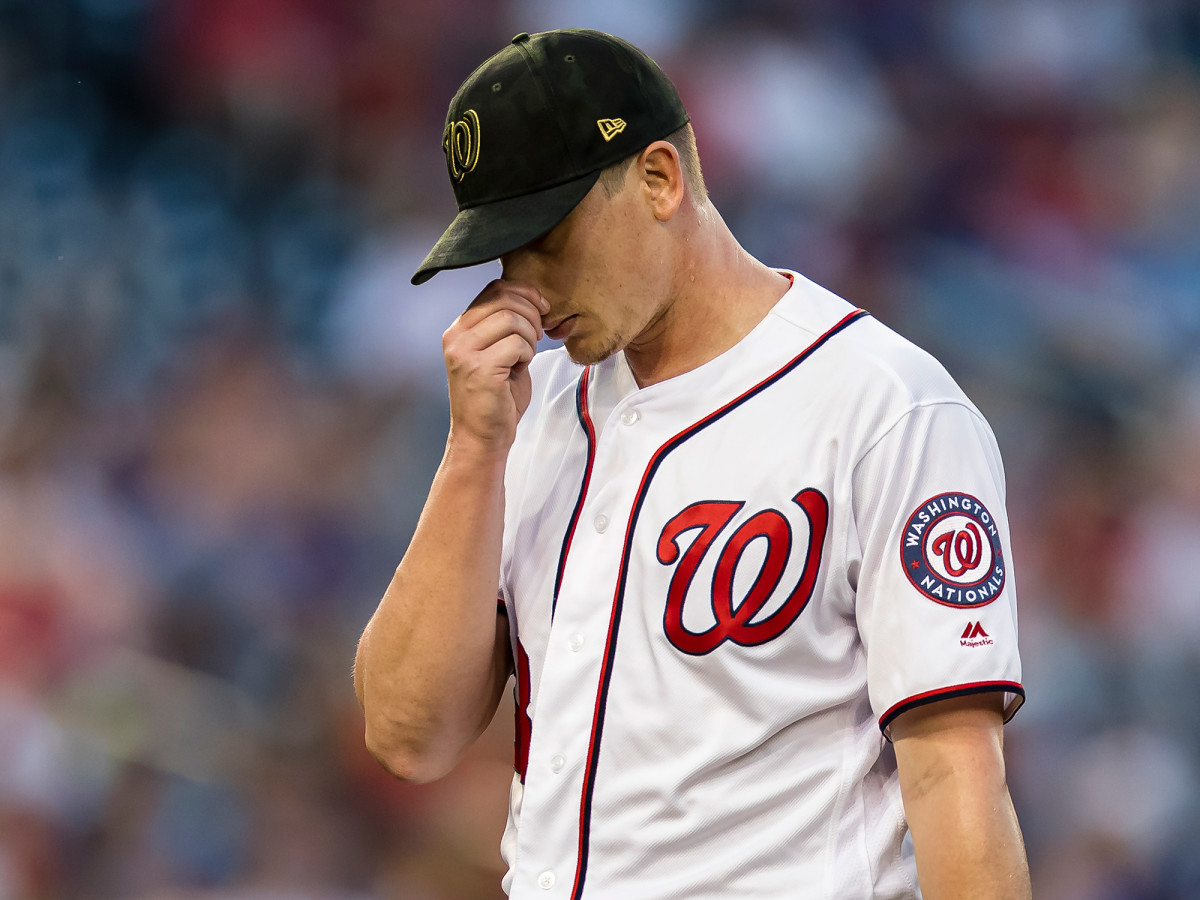Can MLB Do Anything About Fake Injuries?

NEW YORK — At 2:37 p.m. on Tuesday, the Nationals announced they had placed righthanded starter Jeremy Hellickson on the 10-day injured list with tendinitis in his pitching shoulder. By 3:15 p.m., he was throwing long toss in centerfield.
“I feel good enough to pitch,” Hellickson says a day later, in the dugout. “But it’s not best for the team.”
Hellickson has a 6.23 ERA this season. The team added a reliever, righty Javy Guerra, to bolster a tired bullpen, and will likely use righty Kyle McGowin to start in Hellickson’s place. Hellickson insists he is truly hurt—that this is not, in the parlance of baseball players, a phantom injury designed to give his organization roster flexibility—but he understands why people might not believe that. Put simply: because, very often, teams lie.
Two weeks ago, Giants lefty Derek Holland told reporters the team placed him on the IL with an injury he knew he could pitch with. “I did a fake injury,” he said. “I’m not happy about that.” (San Francisco president of baseball operations Farhan Zaidi said that medical staff had known of a bone bruise on Holland’s left index finger since spring training.)
Holland on moving to the bullpen:
— KNBR (@KNBR) May 12, 2019
"To be honest, I have no idea what they’re doing... It’s more from the front office. We keep changing a lot of things, I did a fake injury, so I'm not happy about that. But at the end of the day, I'm going to do whatever they ask me to do." pic.twitter.com/3d7L3IUZIo
This has always been an issue, to some degree. Limited roster space mean that clubs sometimes stretch the definition of an injury so they can stash players without losing them to the minor leagues or to another team. If someone is tired or struggling, give him a week or two off to see if he can regain his stuff. But when the last collective bargaining agreement, which took effect before the 2017 season, reduced the minimum stint from 15 days to 10, IL manipulation became the new pine tar on a pitcher’s cap: No one wants to call attention to anyone else’s abuse of it, because everyone else wants to do it, too.
The Dodgers used this strategy to great effect in 2017, when their 38 DL trips led baseball. (League average was 22.9.) They needed to fit seven starting pitchers into a five-man rotation, so they turned the locker room into an emergency room. Ten days off only costs a pitcher one start, so if you game it out meticulously enough, you can buy low on players with injury histories, then get them all extra rest down the stretch.
Of course, this is all technically against the rules. The league requires the team doctor and MLB medical director to certify each injury, and the team in question must share supporting documentation. The commissioner’s office can investigate injuries it deems to be suspicious.
It’s not that simple, though. No pitcher in history has returned a clean MRI. Some teams try to avoid administering such tests because there is no way to tell which damage is old and which is new. Anyone who wants to can find an injury on a scan. There is a likely apocryphal tale of a player, as reporters approach to ask about his impending IL stint, asking his manager which leg he hurt. Most of these injuries are more legitimate than that.

“There is a really fine line between being injured and being hurt,” says Washington closer Sean Doolittle. “If they deferred to you, you’d be like, ‘No, I want to go out there and try to help the team win. These are my guys and I want to be out there with them. And yeah, I’m not at 100%, but it’s the end of May. Nobody’s 100%. Maybe this is something I can pitch through and it’ll be grindy for a month, but it’ll go away.’ But then you have to balance, if I’m not effective, am I placing a larger burden on the team?”
In truth, no one except the occasional angry player suffers. Teams get the roster flexibility they crave. The union is happy because a player continues to accrue service time and major league salary while on the IL—and another player is called up to replace him. And for the most part, the “injured” player is struggling, so he would rather play up a twisted ankle than be optioned to the minor leagues or designated for assignment.
If anyone were looking for a solution, what might that be? The league has floated the idea of a 12-day IL for starting pitchers, in the hope of costing them a second start and making the rest less desirable. Another approach might to be to manipulate the roster—legally. What if the league allowed teams to carry 28 players, with only 21 active at a time, and capped the number of pitchers at eight, one starter and seven relievers? Each night there would be seven healthy scratches, the remaining starting pitchers and a handful of other players in need of a day off. This might also reduce the number of pitchers recording one out at a time. Of course, then teams would have to pay three extra players. And that would really hurt.
